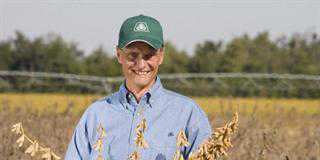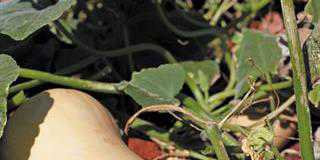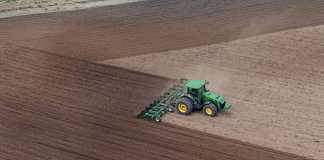Although smallholder farmers occupy and cultivate only 10% of agricultural land worldwide, they produce up to 20% of the global food supply, according to the Food and Agriculture Organisation’s (FAO) Committee on World Food Security. At a meeting held at the University of Pretoria recently, Maryam Rahmanian, vice-chairperson of the committee’s High Level Panel of Experts on Food Security and Nutrition, said that prior to the 2008 food price crisis, smallholder agriculture was seen as a problem that kept countries in a backward state.
Farmers were told to ‘get big or get out’. This is no longer the case, according to Rahmanian. Over the past few years, smallholders’ contribution to food production, growth, stability and security has been recognised as significant. That the SA government believes food security lies in investing in smallholder agriculture is no secret. More than R7 billion of the national budget will be spent to support 435 000 subsistence and 54 500 smallholder farmers over the next three years.
But is this the way to go? Surely food production can be increased only by modern intensive farming methods, as Farmer’s Weekly columnist Koos Coetzee (FW, 2 May 2014) suggests? He argues that successes reported with small-scale schemes in Asian countries should not convince SA policymakers that the same will happen here.
“While subsistence agriculture can help to alleviate food shortages in rural areas, focusing on this type of farming will leave the large urban populations without local food supplies,” he notes.
The question is: how successful has smallholder farming been in other countries? Pakistan is a good example to look at. Smallholder farming predominates here – five million of its eight million farmers have farms smaller than 2ha. So it would seem to represent the kind of model that the SA government is striving to emulate.
Among the top 10
Some 43% of Pakistan’s workforce is employed in the sector, and agriculture contributes 23% to the country’s gross domestic product. The main crops are wheat, sugarcane, maize, potatoes and cotton, and farmers live and farm in clusters that form little communities – rather like the agri villages envisaged in South Africa.
What might surprise some is that according to the FAO, Pakistan is among the top 10 producers of wheat in the world, with a 24-million ton output in 2010. But the problem is that Pakistan’s yield of 2,6t/ ha hardly compares with China’s yield of 4,7t/ha.
China is the largest producer of rice, with an average yield of 6,5t/ ha, while Pakistan’s average rice yield is 3,1t/ ha and its sugarcane production is 52,4t/ha. Brazil, the largest global producer of sugarcane, has a yield of 79,2t/ha, and Colombia has the highest at 118,1t/ha. Whether or not Pakistan’s smallholder ethos is right for that country is surely moot. The system is completely entrenched.
South Africa should rather be asking if a smallholder country such as Pakistan can improve its agricultural yield across the board. This is crucial, given rising populations and a decrease in arable land. SA agricultural expert Danie Bruwer, who has 40 years of experience in the sector, says it is possible. He recently assessed Pakistan’s agricultural landscape as part of a team commissioned by FARM Agricultural Risk Management Holdings.
Visiting areas in the Punjab province, the team observed how Pakistan’s small-scale farmers still use ancient, outdated farming methods. These affect the health and productivity of the soil, and negatively influence the yield.
Trying to increase profitability is difficult with farmers facing low crop yield, expensive property rates and the high cost of fuel, explains Bruwer. In addition, several regions of Pakistan are water-stressed and water management is poor. Flood irrigation methods affect crop production and yield, and a more efficient system is needed.
Sustainable practices
Precision farming and the implementation of modern farming technologies will greatly benefit Pakistan’s entire agriculture sector, says Bruwer. “Farmers with limited land, little or no risk insurance and fading soil quality are desperate to optimise their production. Precision agriculture offers the farmer higher production possibilities and leads to farming sustainably in a way that reduces environmental impact,” he explains.
Applying inputs without taking soil variety and fertility into consideration can have a long-term negative affect on soil quality and supress yield. Precision farming, by contrast, improves soil fertility and crop yield. Using data gathering, it allows farmers to be proactive and make better decisions, resulting in improved crop yield and sustainability and less risk. In countries where it has been widely adopted, there has been a substantial rise in productivity and a reduction of inputs, thus increasing profitability.
In addition, precision farming has helped improve the quality of land through no-till farming and less water usage.
Precision farming includes mechanisation, which brings opportunities for education and training that create a more skilled labourer force, thereby increasing the profitability and sustainability of the farm and the economy.
The SA situation
The lesson to be learnt from Pakistan appears to be that if government wants to promote and support smallholders in South Africa, it must get things right from the start. According to South Africa’s National Development Plan, the current 1,5 million hectares under irrigation could be expanded by at least 500 000ha with more efficient use of existing water resources and the development of new water schemes.
The plan also states that South Africa can bring underused land in communal areas and land reform projects into commercial production, and that strategies must be developed to support new farmers in collaboration with markets. To do this, the country needs to expand its water resources and irrigation infrastructure.
In other words, just as in Pakistan, there is a definite need here to identify and implement better water management strategies – especially for the communal farmer who needs to optimise production. At the same time, mechanisation is not to be feared. In its December 2012 report, the Bureau for Food and Agricultural Policy (BFAP) states that bearing in mind that South Africa has uncultivated arable soils “suitable for expansion and intensification, as well as additional sources of water, under efficient water management systems, mechanisation should not necessarily be seen as a threat against manual labour”.
Instead, mechanisation “should be thought of as an opportunity to increase the output delivered per worker and stimulate the agro-economic sector under a favourable economic and political environment”. BFAP argues that increases in production “could result in building human capital, where agriculture will employ more skilled, well-paid and young workers”.
Just as in Pakistan, small-scale farmers in South Africa need to be equipped with the ability to better identify opportunities for increased agricultural production.
Viable option
“With household and national food security of utmost importance to a growing population and the need for more sustainable and profitable agricultural practices, precision farming and optimised farming practices for small-scale farmers is a viable option,” says Bruwer. “Providing the necessary support to these farmers, with the help of agronomists and data recorded from analysing their soil, is essential for them to optimise productivity.”













